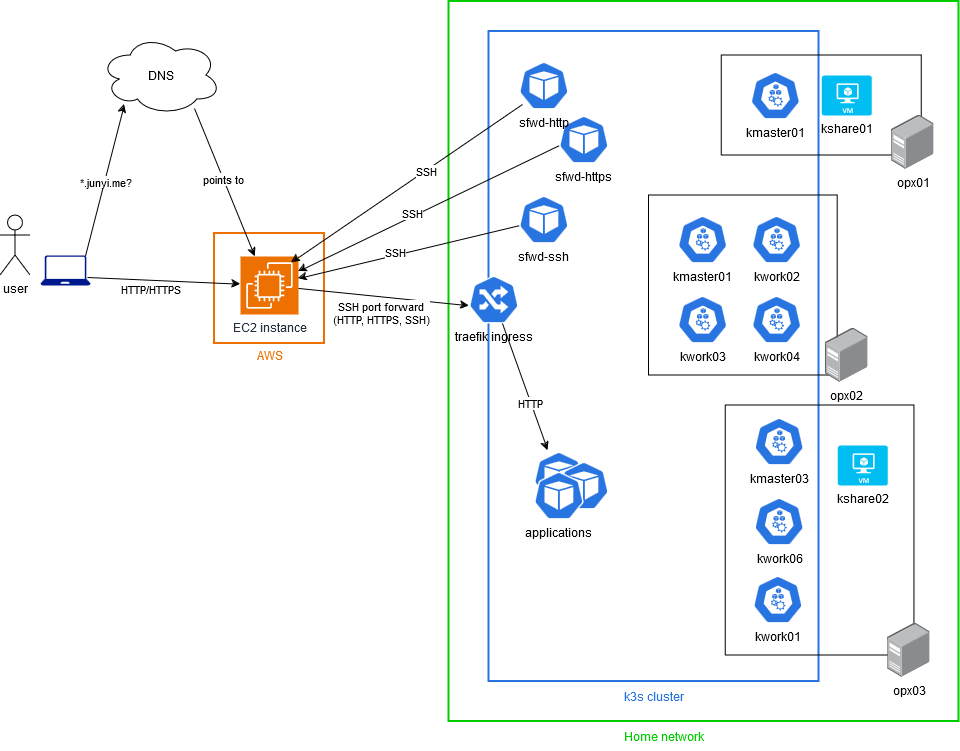Year 2024 is coming to an end, so I thought it’s a good time to reflect on my home lab setup.
This is my first time summarizing my home lab setup, and I’m planning to make this an annual thing to have a record of how my setup evolves over time.

Hardware
Three Dell Optiplexes run everything in my home lab.
| host | model | CPU cores | RAM (GB) |
|---|---|---|---|
| opx01 | Dell OptiPlex 7050 SFF Intel Core i5-7500 | 4 | 16 |
| opx02 | Dell OptiPlex 5070 SFF Intel Core i7-9700 | 8 | 16 |
| opx03 | Dell OptiPlex 7070 SFF Intel Core i7-9700 | 8 | 16 |
Currently they are more than enough to handle my workload. Next year I might look into getting a NAS for storage, instead of using NFS on kshare01 and kshare02 (see below). That should give me more bandwidth.
Infrastructure software
Virtual machines
I’m running the following VMs on these hosts using libvirt (KVM and QEMU).
Each VM has 2 vCPUs and 4GB of RAM, and running Debian 12. 3 of them are Kubernetes master nodes, 2 of them are NFS servers, and the rest are worker nodes.
| host | vm name | role |
|---|---|---|
| opx01 | kmaster01 | k8s master node |
| kshare01 | NFS server | |
| opx02 | kwork02 | k8s worker node |
| kwork03 | k8s worker node | |
| kwork04 | k8s worker node | |
| kmaster03 | k8s master node | |
| opx03 | kwork01 | k8s worker node |
| kwork06 | k8s worker node | |
| kshare02 | NFS server (backup) | |
| kmaster02 | k8s master node |
I might look into using Proxmox or similar to manage my VMs, just for the sake of better UI.
Kubernetes
I’m using k3s as my Kubernetes distribution. To tolerate one master node failure, I have 3 master nodes running etcd data store in HA mode. More on that here.
Here are the addons I use in my cluster:
- MetalLB for load balancing
- Cert-manager for managing TLS certificates
- Longhorn for persistent storage
Workflow
In the Kubernetes cluster, I use the following tools to aid my workflow:
- ArgoCD for GitOps
- Kubernetes Dashboard for monitoring
